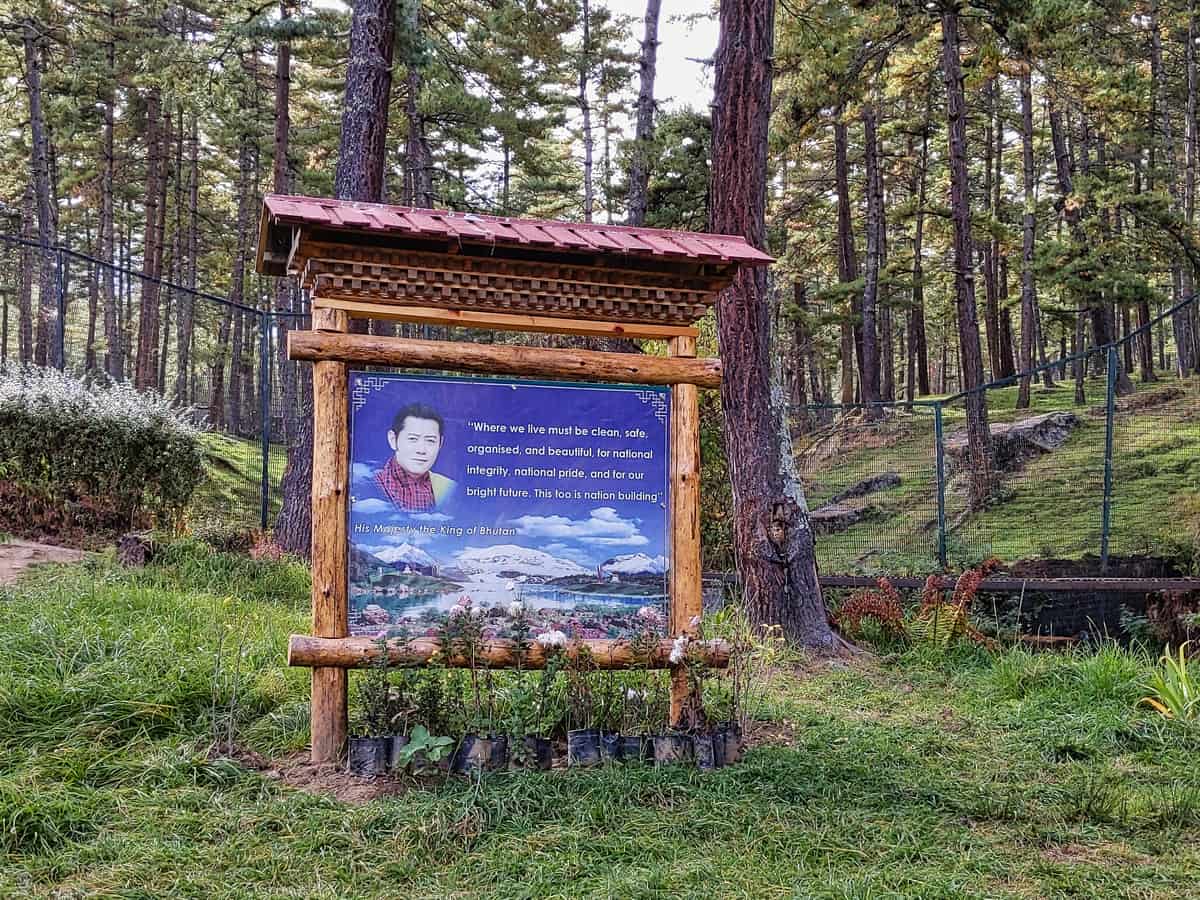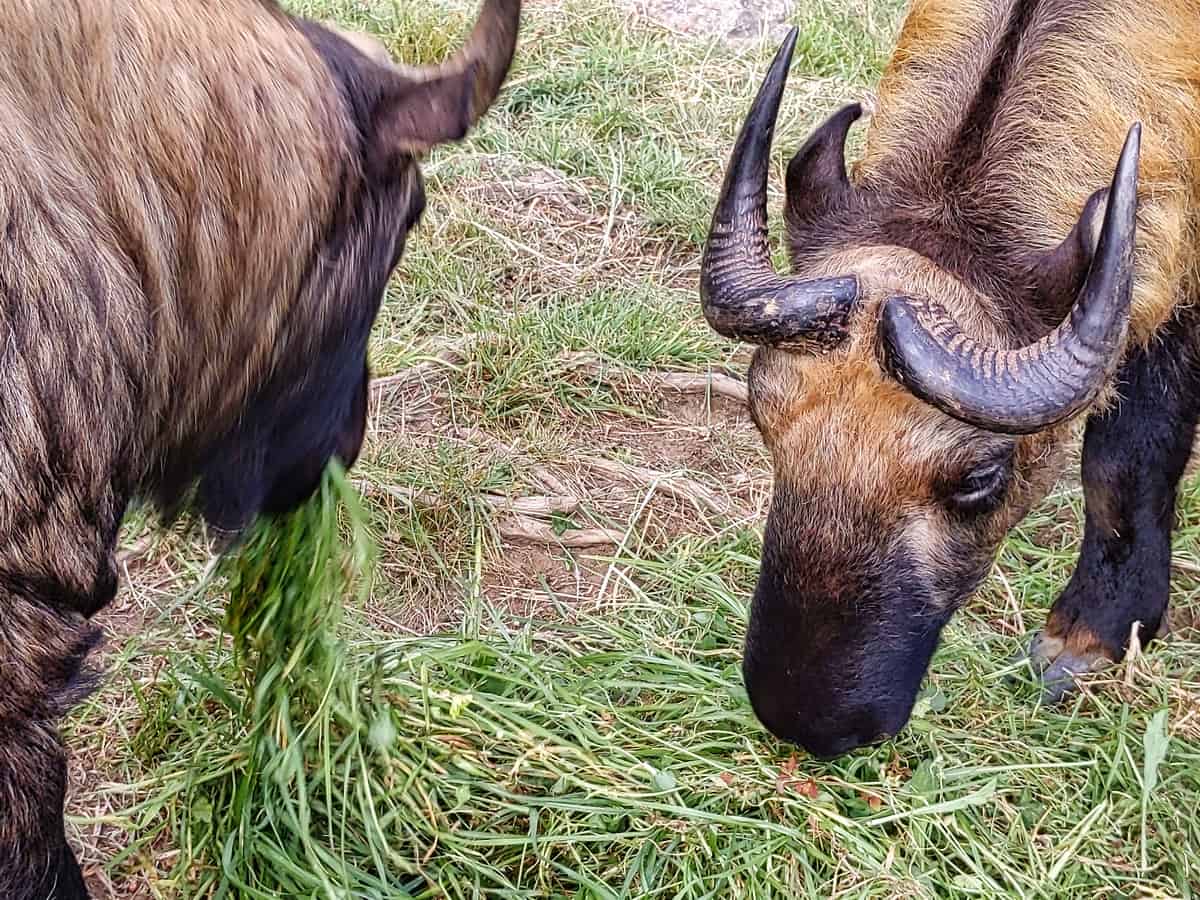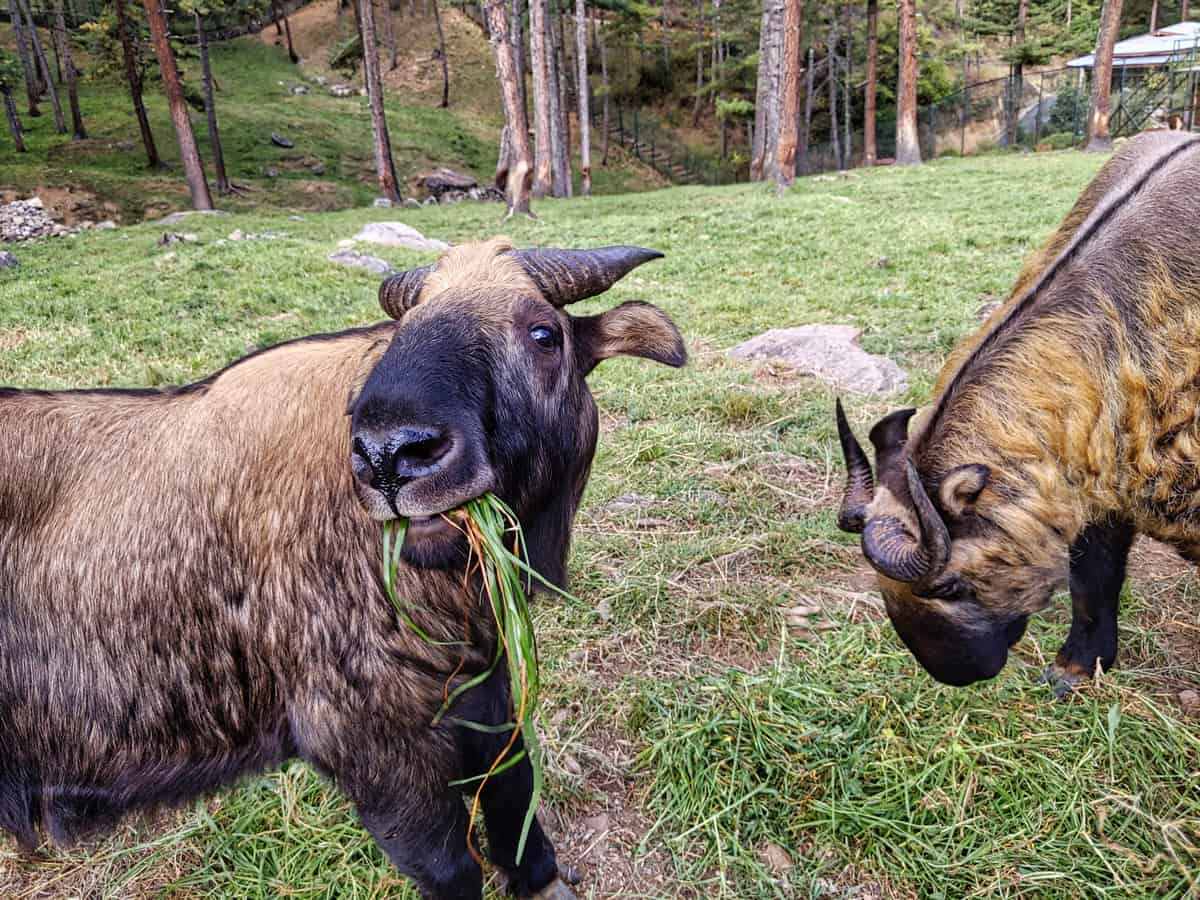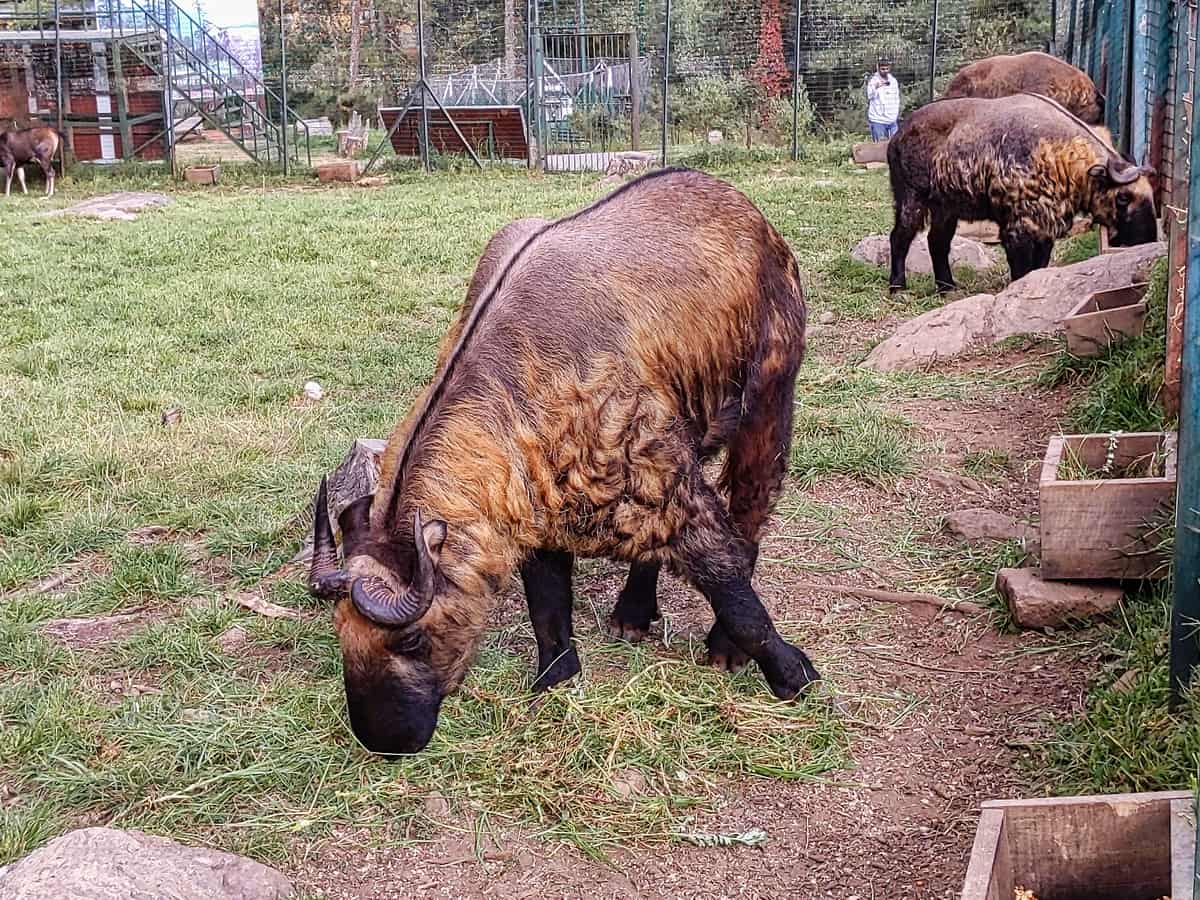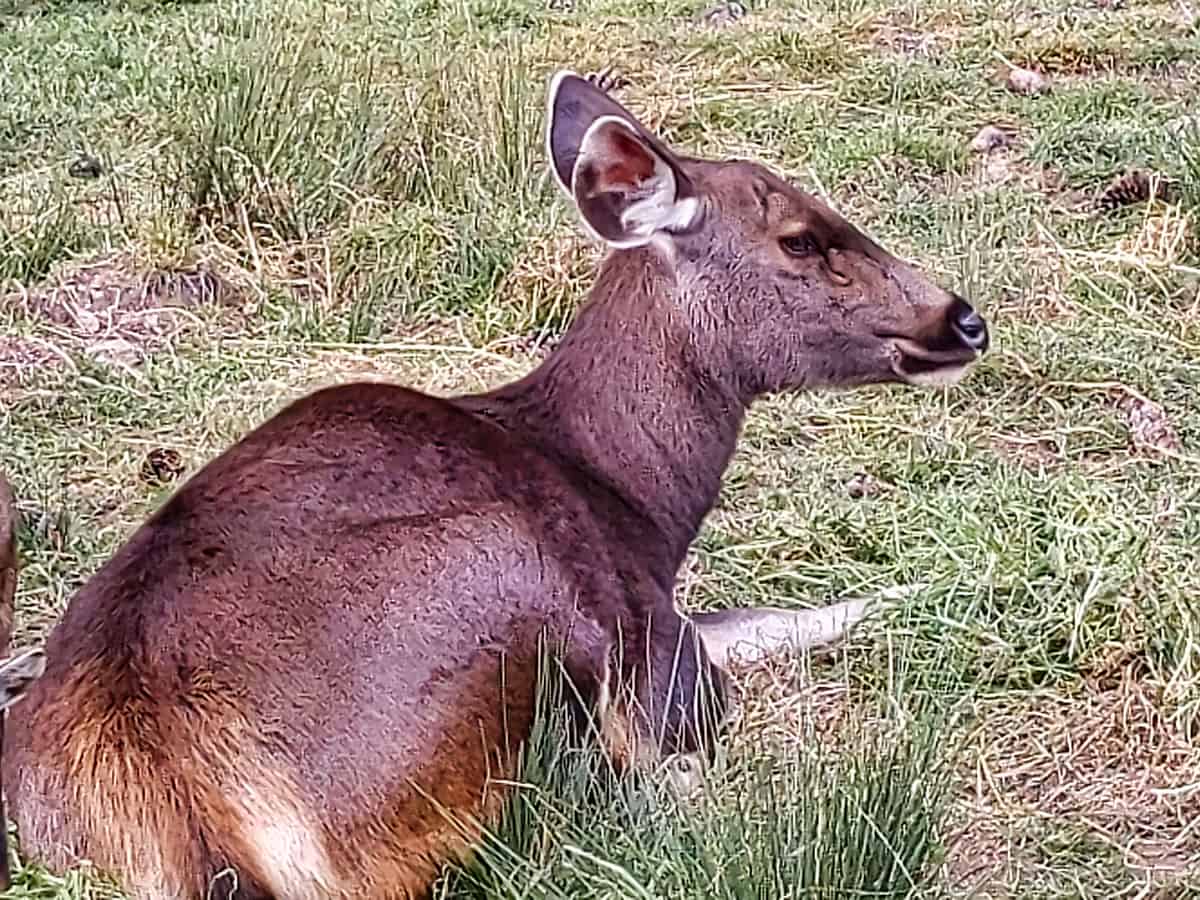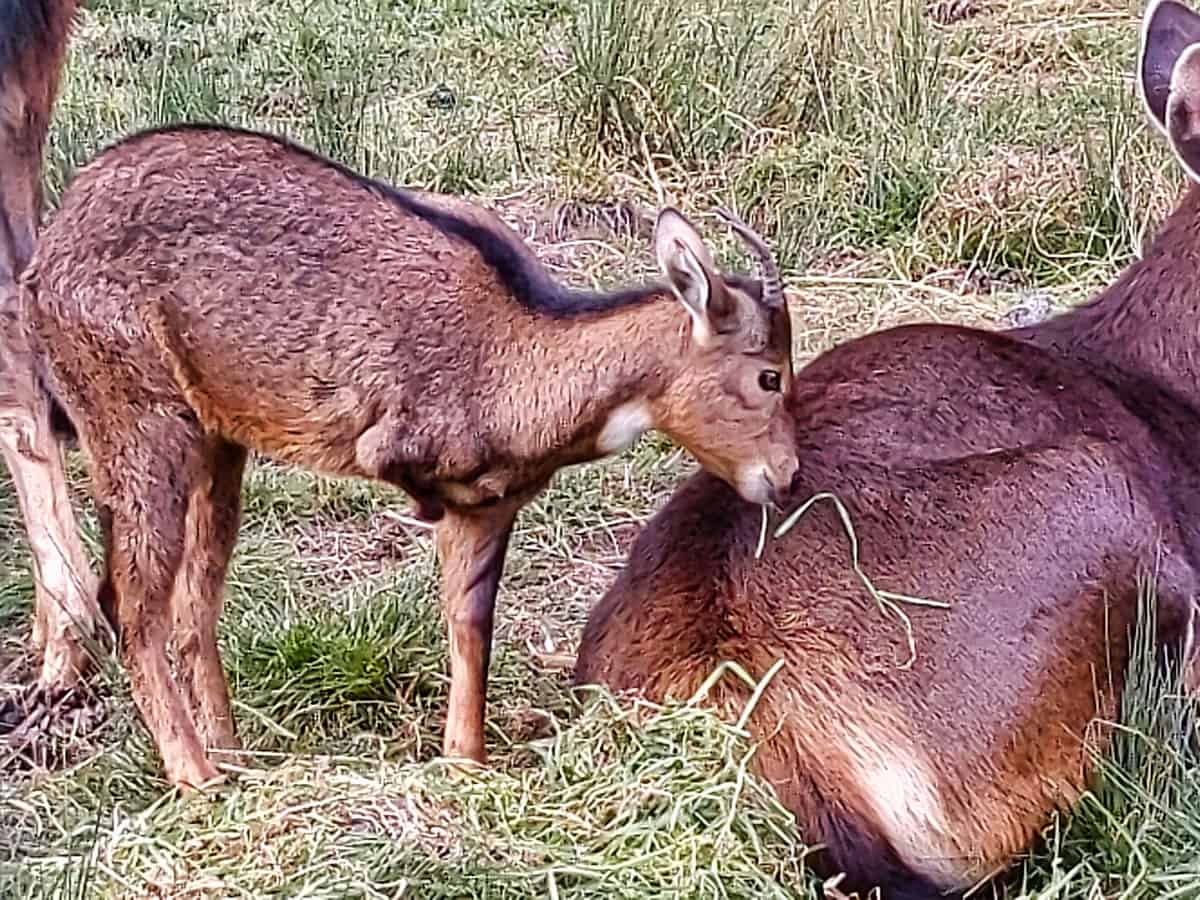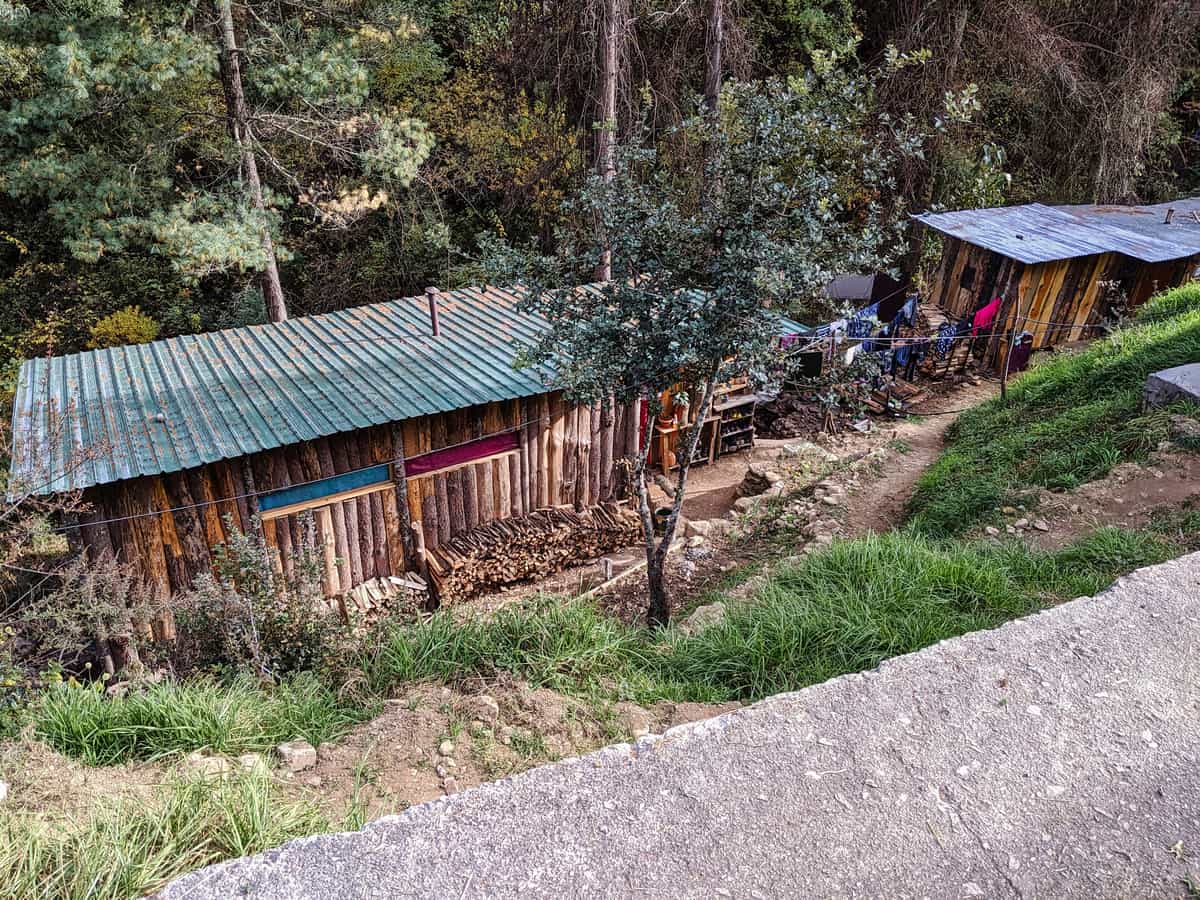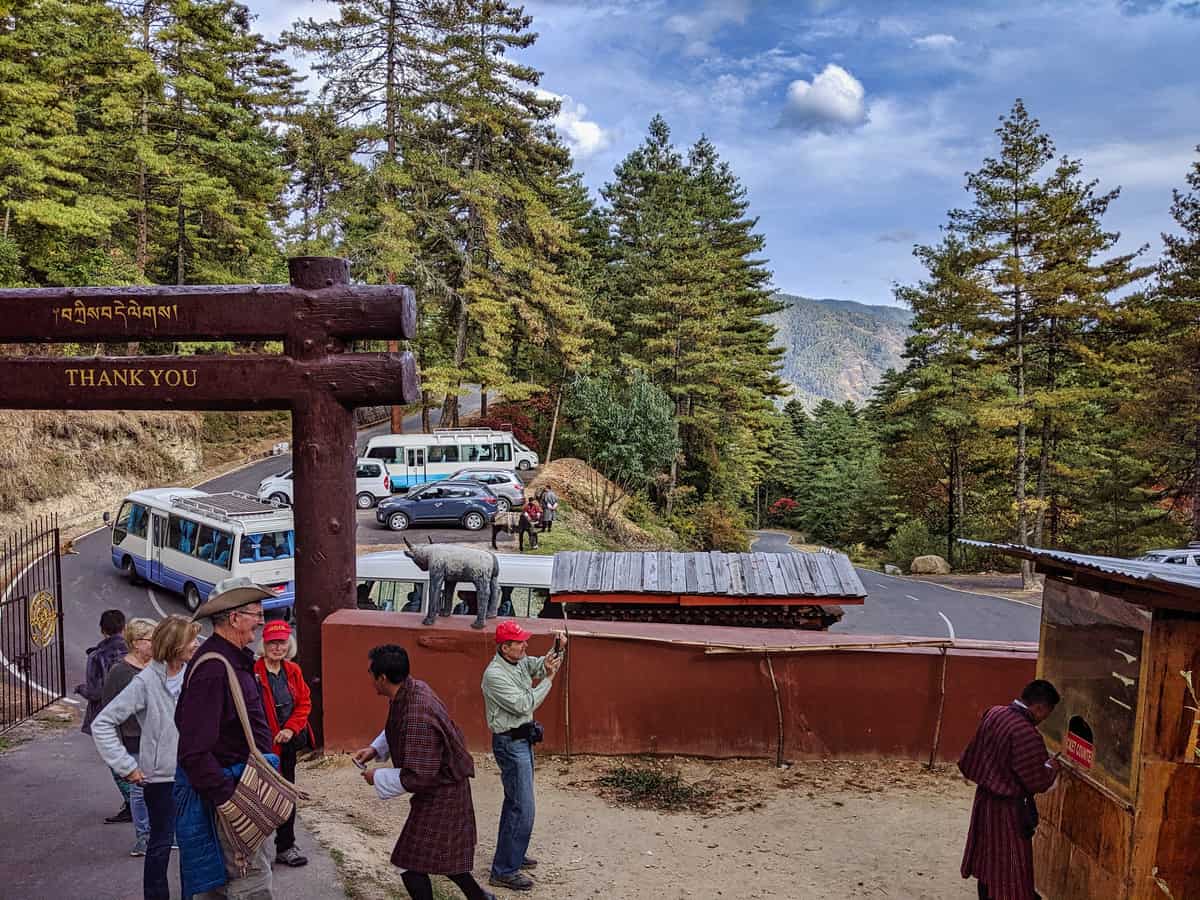Embrace Bhutan Cultural Tour
Thimphu | Bhutan
08 Nov 2019 | Fri
Day 02 of 13
Motithang Takin Preserve Thimphu
Our next destination would take us into a beautiful, higher altitude, forested area just northwest of Thimphu – the Motithang Takin Preserve.
Wildlife Reserve For Takin
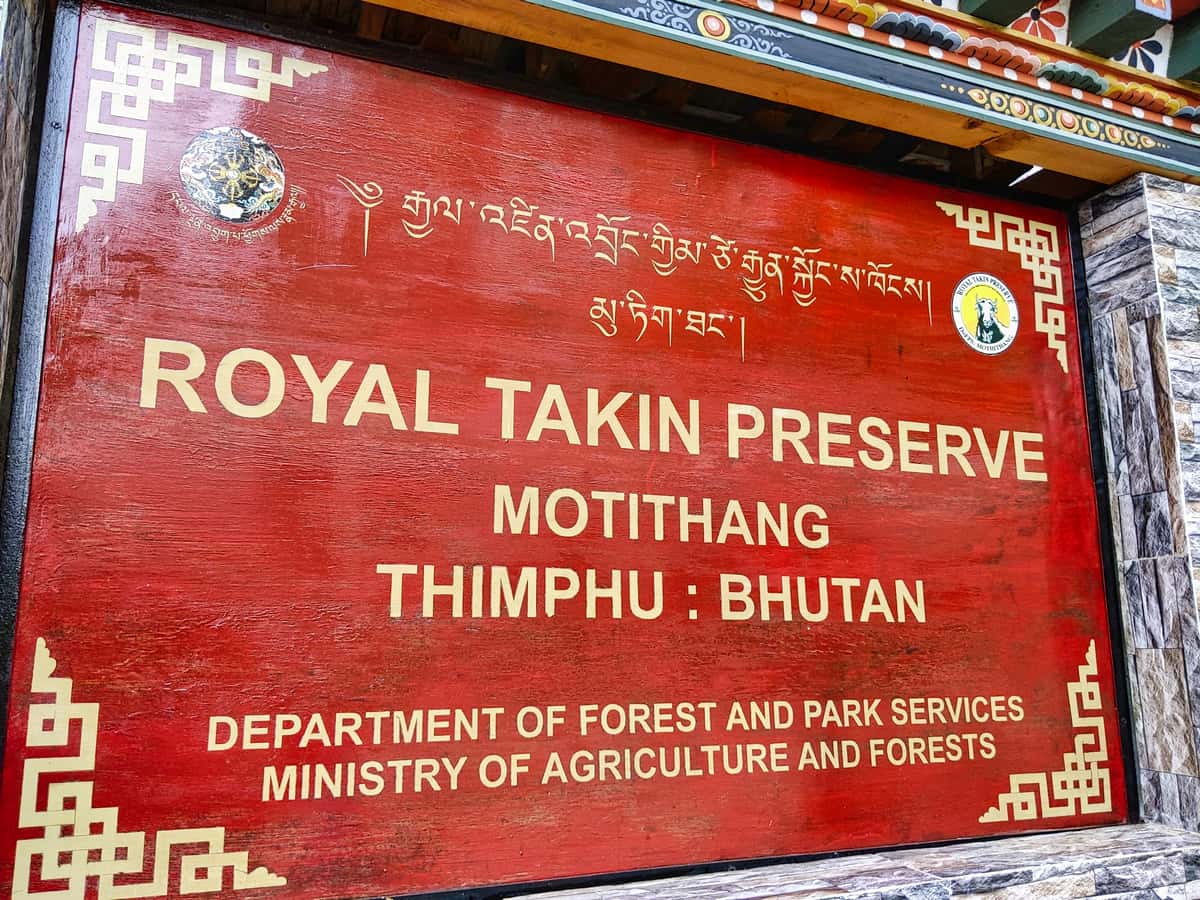
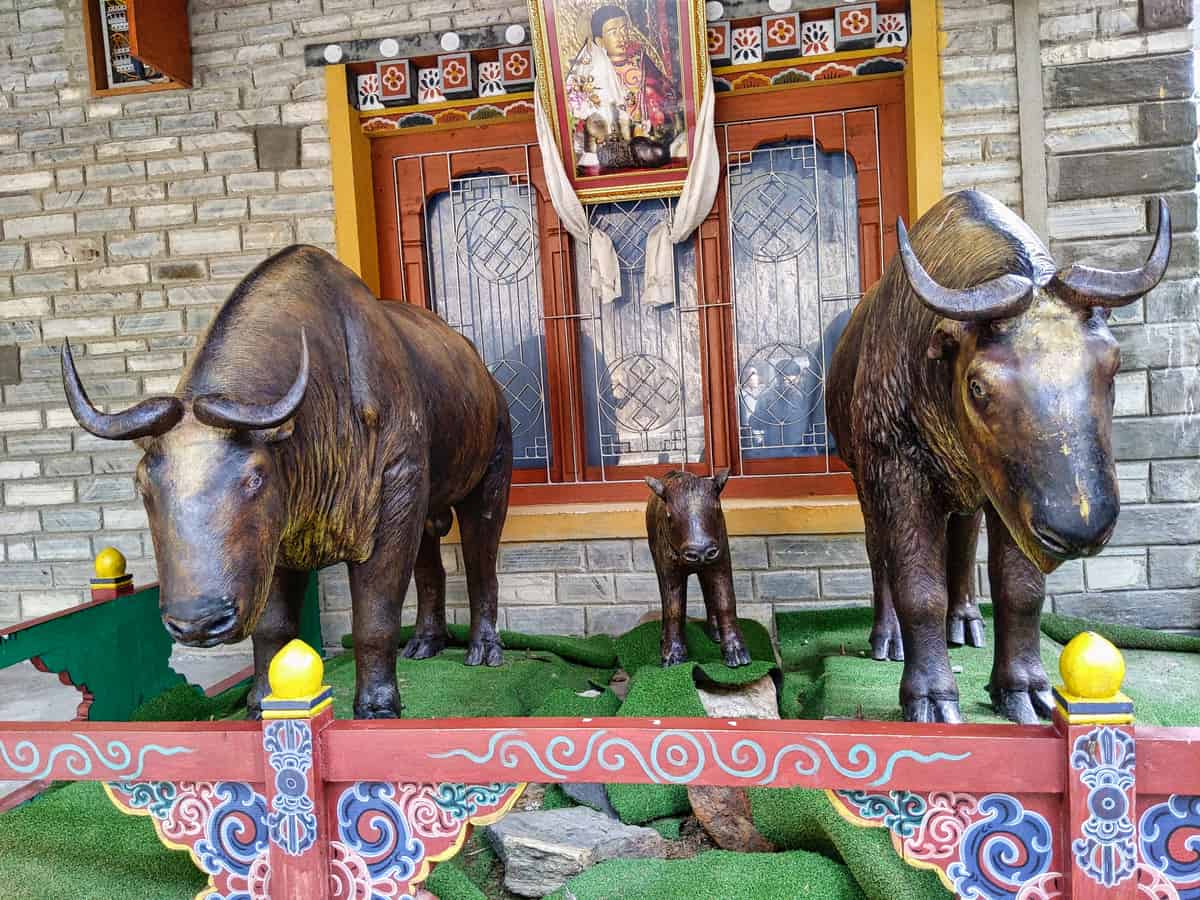
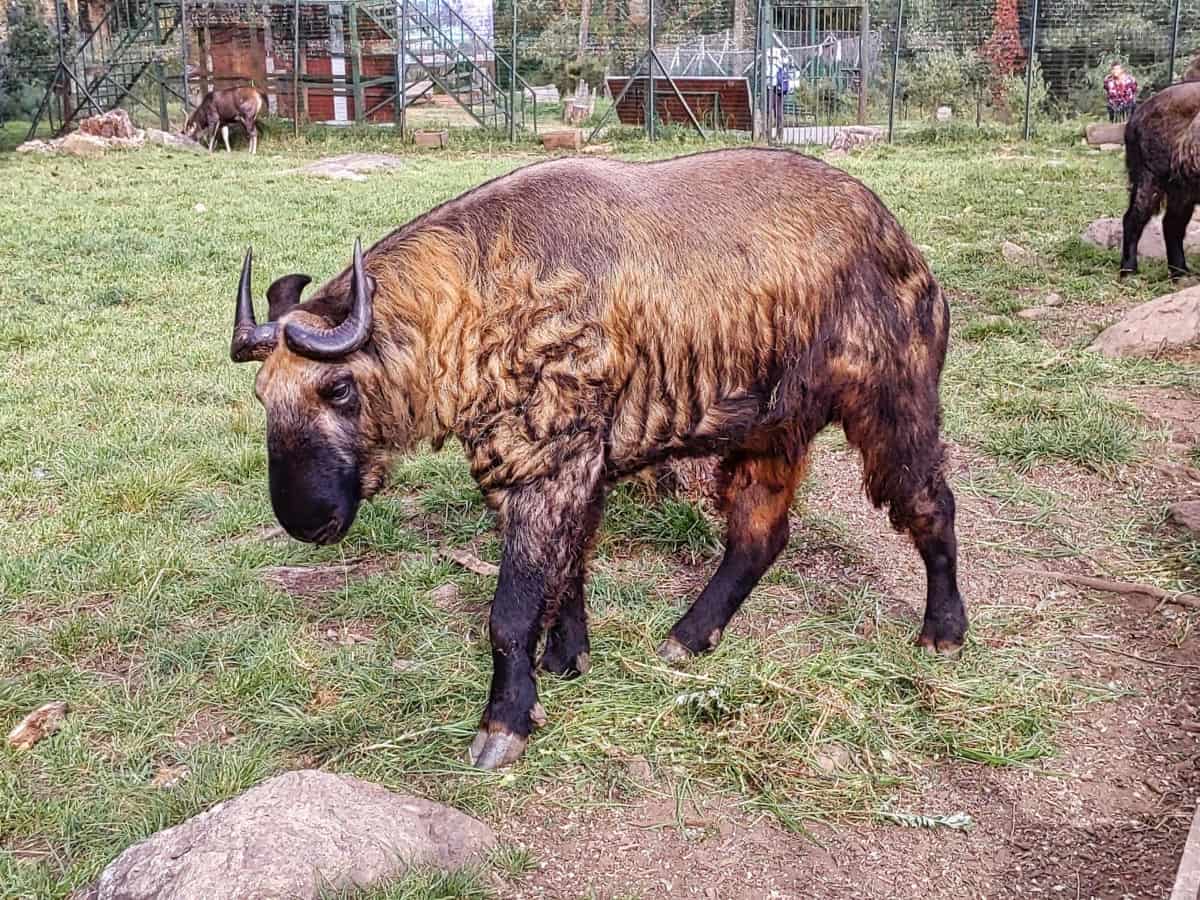
Lets’s Find Out More About the Takin
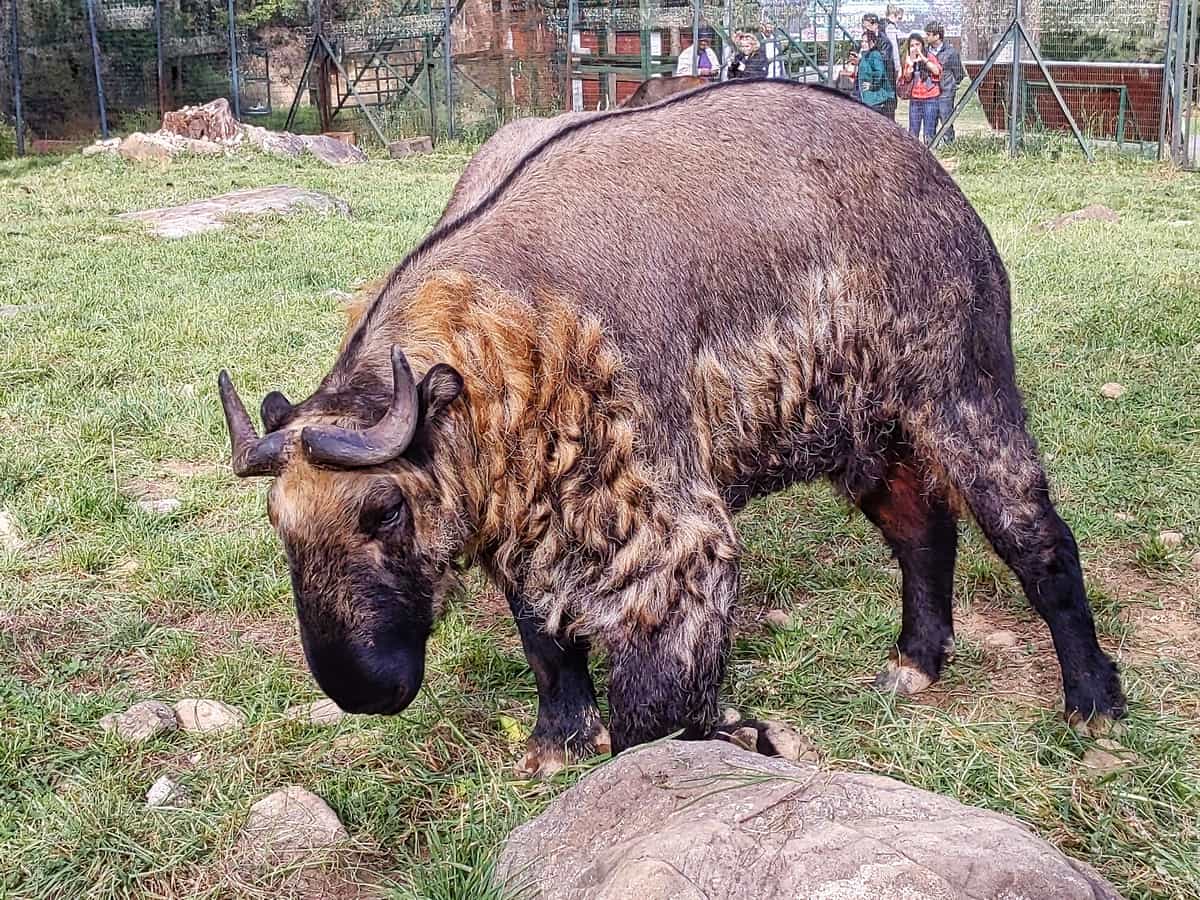
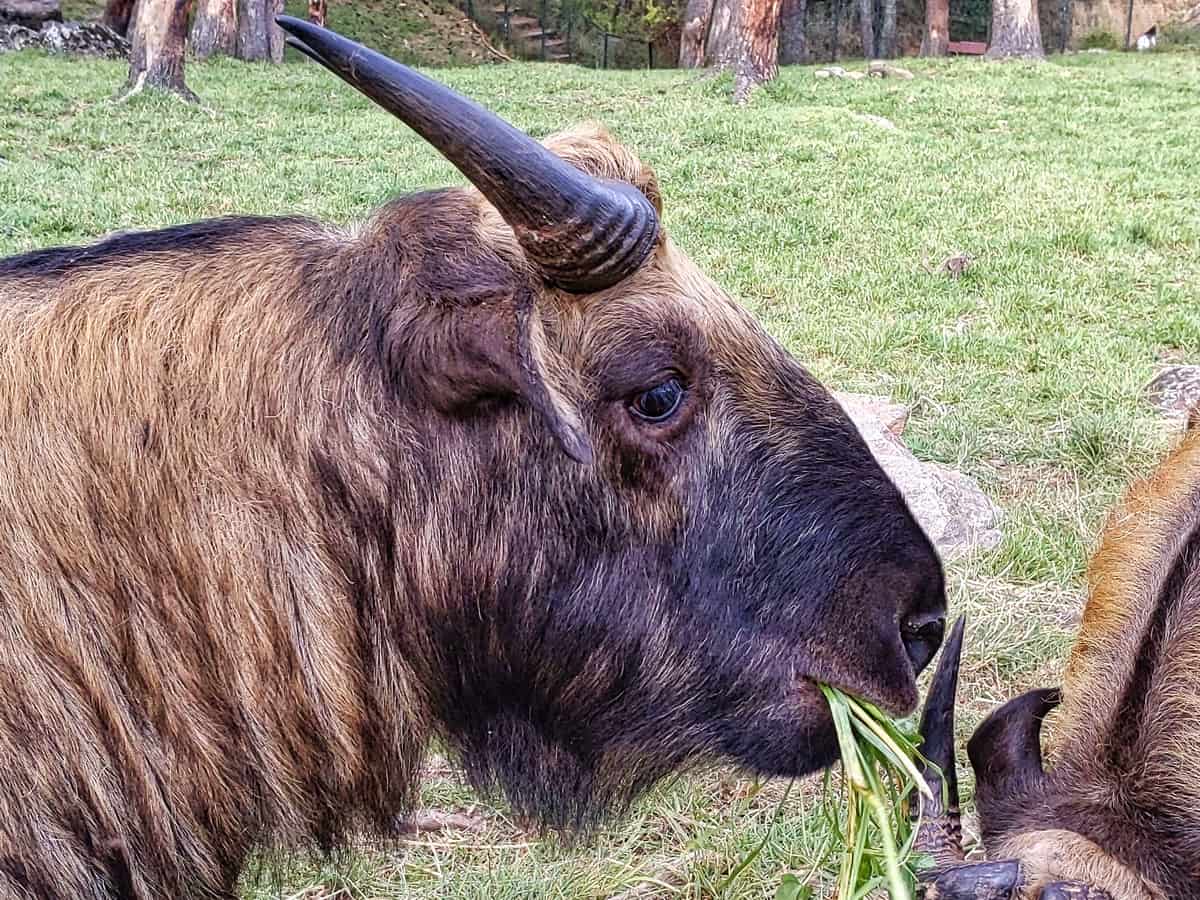
Legend of the Takin – How it Became the National Animal of Bhutan
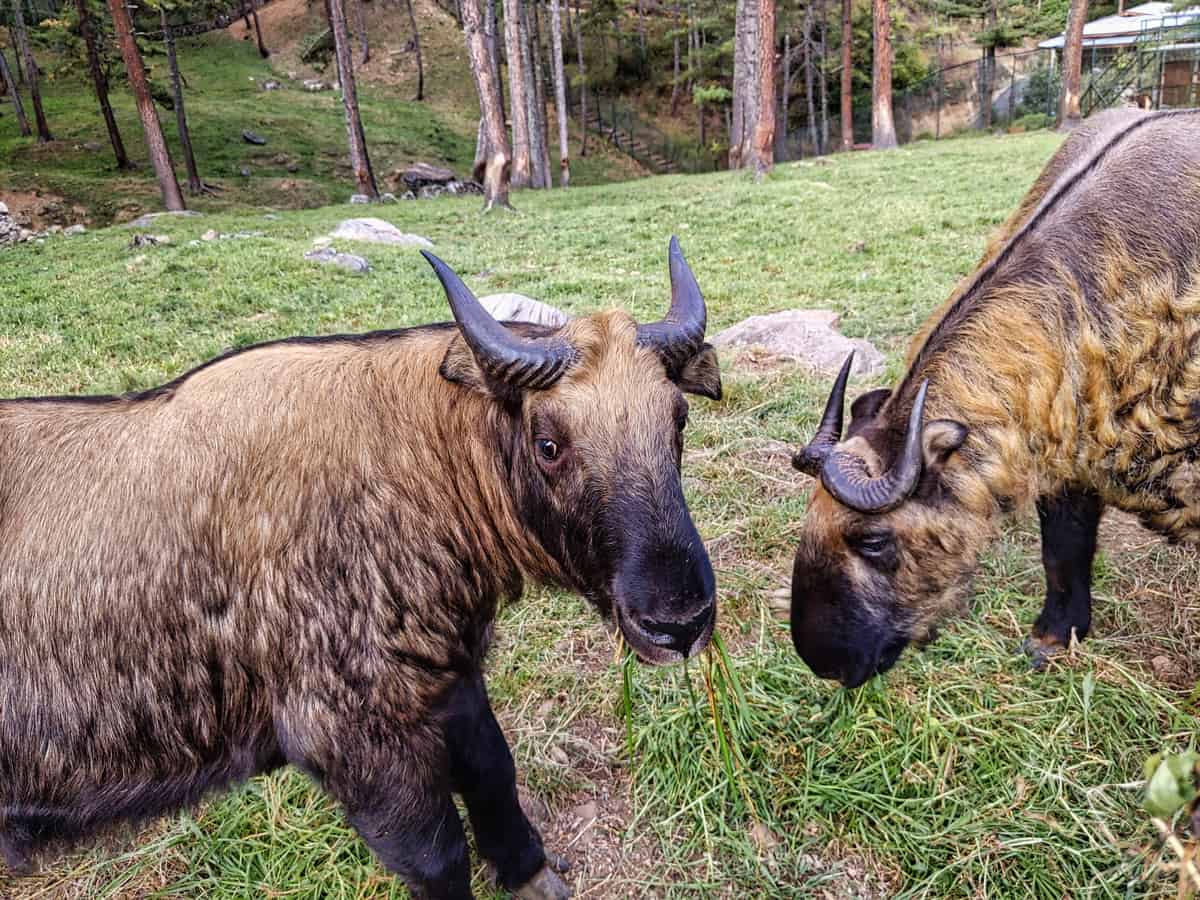
Unique Animal at a Unique Preserve
Having never seen such a unique animal as a Takin it was a real treat for us. Your first impression is that it looks like a mix between a cow and a goat, but other online sources (San Diego Zoo Wildlife Alliance) mention that it has horns like a wildebeest, a nose like a moose, a tail like a bear, and a body like a bison. So it’s definitely a unique-looking animal.
Once we arrived at the entrance, there was a short walk up a paved incline walkway. The entrance had a small visitor center. At the Takin viewing area, there are a couple of spots where you can take pictures of the Takin (if they happen to be present – they could be off in the distance). We got lucky as a few of them were close by.
In the distance, there were some Sambar deer (I think that is what they mentioned) but were much harder to take pictures of.
Overall we found the Motithang Takin Preserve to be very interesting and unique – especially the Takin!
Motithang Takin Preserve Thimphu


